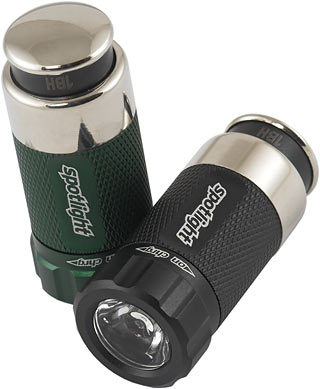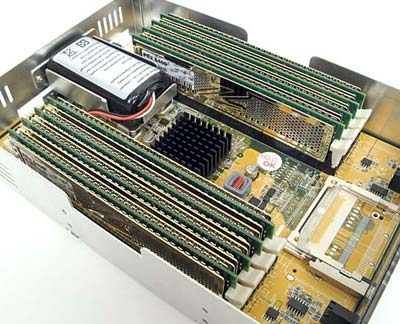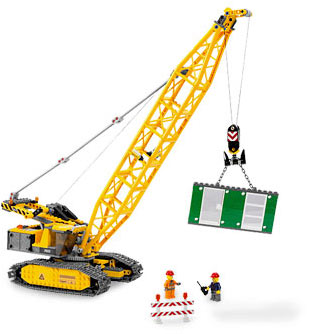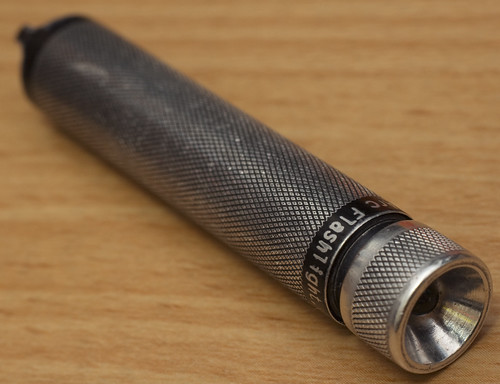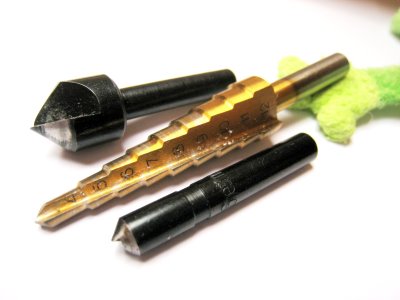Back in the day, you couldn't spit without hitting someone saying something completely wrong about memory effect. But today, really loopily idiotic writing about batteries is quite hard to find.
So I am indebted to the reader who just pointed me to one Dave Thompson's article in the Sydney Morning Herald, entitled "The big fat lie about battery life". (It also appeared in the Melbourne Age - the two papers are published by the same company and share a lot of material.)
My correspondent gave his heads-up e-mail the title "Worst. Battery. Technology. Article. EVER.", and I am delighted to say that I concur.
Mister Thompson is apparently under the impression that "average" laptops currently come with nickel-cadmium batteries. This hasn't actually been the case for more than ten years. Laptops with NiCd batteries were still easy to find as late as the mid-Nineties; the famous ThinkPad 701, for instance, apparently straddled the gap, with a NiCd battery for early-production 701s.
Nickel-metal-hydride batteries superseded NiCds, and then lithium-ion or lithium-polymer (generally a distinction without a difference; see this piece, from 2001, for more...) took over in the last few years of last century. The demise of NiMH in the laptop market was quite rapid, even though early lithium-ion batteries had a distressing tendency to drop dead after only a couple of years. But lithium batteries gave a lot more capacity per kilogram, and laptops were expensive enough items that manufacturers could put cutting-edge battery technology in them without greatly - proportionally speaking - increasing the price of the computer.
I don't think it's actually physically possible to buy even a NiMH-powered laptop any more, let alone a NiCd-powered one. Lithium-ion dominates the market, including the low end, and I don't just mean laptops. $20 Chinese Picoo-Z-knockoff helicopters, $12.50 tiger-shaped MP3 players, entry-level mobile phones, $US300 netbooks, you name it. I have a mobile phone that retails for a flat fifty bucks unlocked, and it has a lithium-ion battery. I cannot imagine how Dave Thompson has come by his view of the world.
All undaunted, though, Dave ploughs on with a number of fascinating details about the "NiCads" he alleges are still the standard power source for laptops.
Like, apparently they have a limited lifespan. Well, yeah, everything does, but NiCds are actually likely to work fine for many years if not abused. Few rechargeable lithium batteries are likely to be useful for more than five years.
"If not used properly they simply stop working". I thought he might have been thinking of memory effect or something, but no, he reckons they die if you don't use them, and need regular cycling.
You hear this all the time - it's not right out of left field like the bit about NiCds still being in common use - but it's not actually true. NiCds are actually known for their very long shelf life. If they've been on the shelf for a year then most of the charge will have leaked away, but even if they've been on the shelf for ten years you'll probably just be able to give 'em a charge and put 'em to work.
All you achieve by cycling most NiCd, NiMH or lithium batteries is wearing them out faster. There are certain situations where emptying and refilling a battery can be good - NiCds suffering from voltage depression, say, or LiI batteries whose monitoring hardware has lost track of how much capacity the battery actually has - and I think lithium-ion often hits its shelf-life limit before even someone like Dave can cycle it to death. There are special cases in the radio-control world, too, where absolute battery capacity may be less important than high current delivery and a shallow discharge curve, so your electric car or plane is almost as fast at the end of a four-minute race as it was at the beginning. But as a general rule, cycling your batteries is like "cycling" your car's fuel tank, by driving round the block until it's empty then filling up again.
Dave is, at least, correct that NiCds are a pollution risk if you throw 'em out. Cadmium is quite a lot more toxic than lead, and I think there's still no good way to recycle NiCd batteries, here in Australia at least.
So it's a bit of a shame that he's encouraging everybody to wear their NiCds out faster. Good thing laptops aren't actually powered by NiCds any more, ain't it?
The toxicity issue is one of the big reasons why the much-less-toxic NiMH batteries became popular; nickel pollution is a problem too, but nickel is rather less toxic than lead, and far less toxic than cadmium.
Fortunately, old dead NiCds aren't particularly dangerous just sitting there. So you might as well just toss any dead NiCds you have into a sealable container, put it under the house and forget about it, until someone comes up with a way to recycle them that doesn't involve sending them to China to poison people there.
Dave has noticed that, sometimes, someone who last used their laptop on battery power a long time ago discovers to their dismay that it now has "20 seconds" of battery life. He thinks this is because the battery hasn't been cycled. It's actually because modern laptops have lithium-ion batteries, and lithium-ion batteries have a relatively short lifespan (improving all the time, though - things aren't as dire as they were when I wrote this in 2004). If your laptop battery had 25% of its capacity left when you last disconnected the mains power, a year ago, then yes, it's very likely to be completely dead now, and there's nothing anybody could have done over the intervening months to avoid this. (It's possible that the battery is actually OK but the capacity-monitoring hardware has gone nuts, though; cycling might actually help, there. It's also possible that the laptop has a dumb charger circuit that's slowly barbecued the battery; cycling would in this case be a waste of time.)
Well into the article, Dave remembers that NiMH batteries exist - but then immediately refers to "NiCad's well-known memory effect", resetting the clue-meter to zero just when it looked as if he was making some progress. And then he signs off with "All batteries like to be used, so run them down every few weeks and charge them back up properly just to keep them in top shape", cementing his position in the I Hate The Environment, Die, Environment, Die, Coalition.
Maybe, I thought, Dave just had a small stroke while writing this article and is usually quite sensible. So I had a little look around for other examples of his work.
Apparently cameras, wireless peripherals and "pen-drives" can reasonably be expected to work only once, which is news to people who've been using the same wireless Logitech mouse-and-keyboard set for the last ten years.
Oh, and wireless input devices "eat batteries like a cop in a donut shop".
If current wireless-desktop gear is only as good as the devices I reviewed in 2001, this means police officers have listened to their cardiologists and reduced their consumption of doughnuts to maybe one every two months, tops. Good for them!
He has also written... a thing... about Linux. I wouldn't call it an article. I'm not sure what it is.
(This piece has the brilliant subtitle "Dave Thompson gives his take on Google's new search engine, Chrome", but that's probably the work of a subeditor, not Dave. Mr Thompson tried his best, though, complaining about the usage-tracking feature of Chrome without figuring out that you can turn it off any time you like, and don't have to turn it on in the first place.)
The end of Dave's wonderful battery article says Dave "runs a computer-services company in Christchurch, New Zealand". I think this is it. I wonder if his workmates have some stories?
I don't know how Dave's managed to end up with the ideas he's got. Mere incompetence is common enough in all branches of journalism, but Dave's version of it is odd. Perhaps he just fixes his opinion of every computer technology when he plays with version 1.0, and assumes that 20 years later it'll still be the same. Who knows.
(Oh, and here his battery article is on the Stuff.co.nz site, in case the Herald/Age people do another of their embarrassing-article disappearing acts. Here are other sources, from a Google search for a string from the article.)
